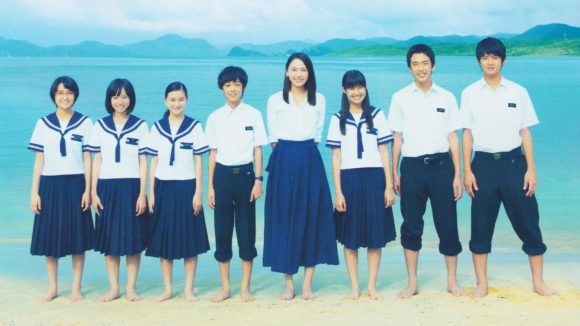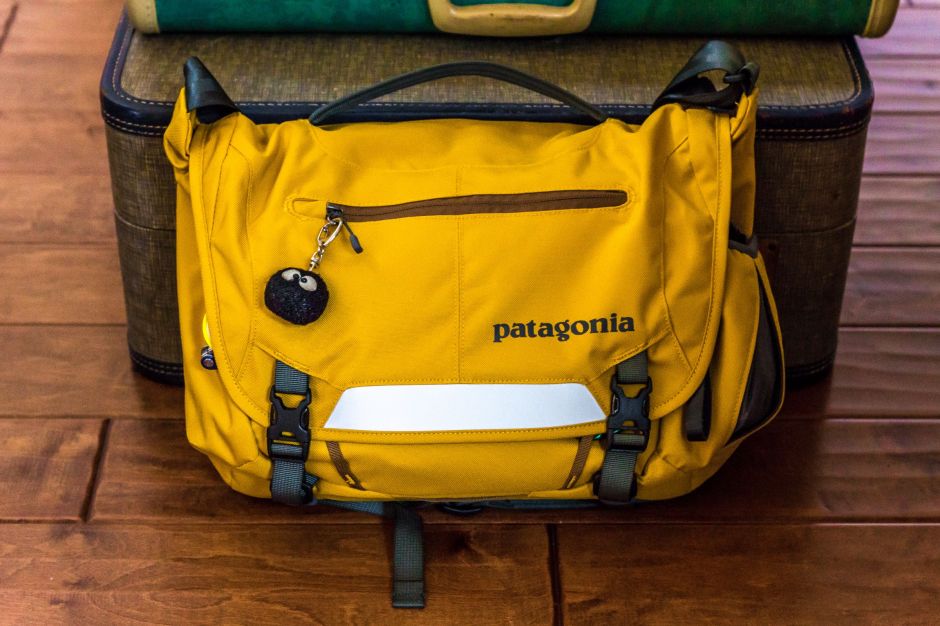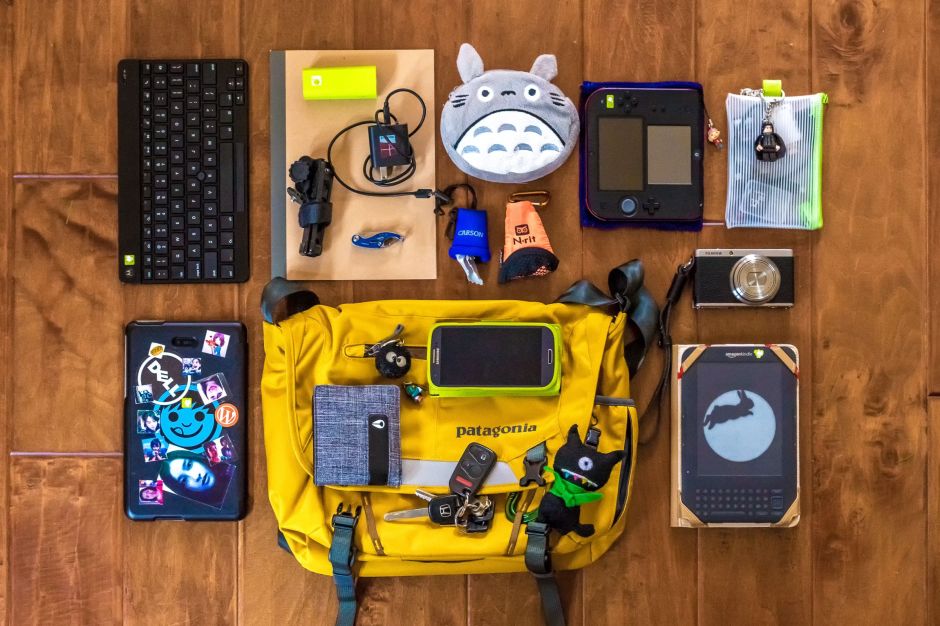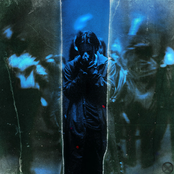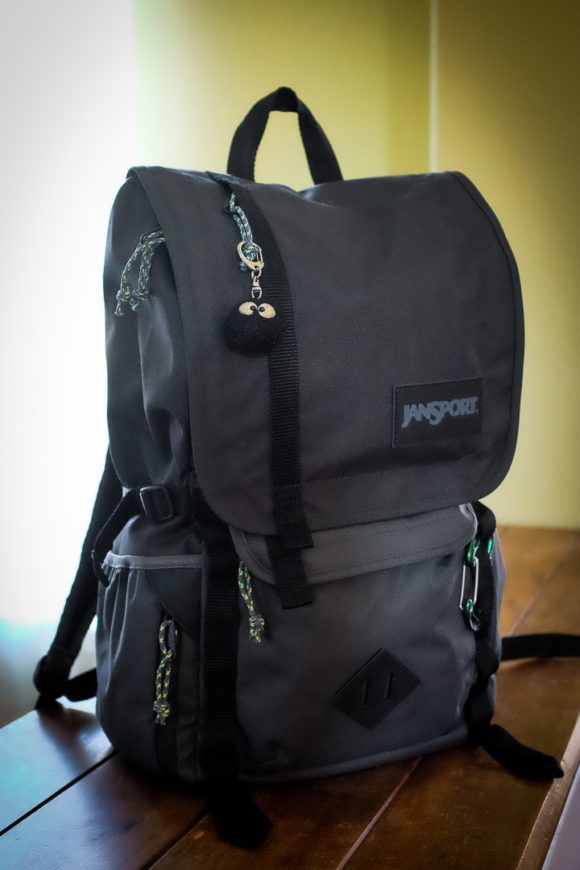
JanSport Hatchet Backpack, in Grey Tar
I bought a new backpack a couple of weeks ago – the JanSport Hatchet Backpack, in Grey Tar. It’s has a 28-liter capacity which I’d consider a medium-sized pack, bigger than my Patagonia Minimass messenger bag, but smaller than my North Face Router (41-liter) backpack. Not only is it smaller than the Router, it is much lighter (but less rugged). The design of the top flap is what really attracted me to this bag. And not only the look, but the function. As with everything, there are pros and cons. So let’s dive right in with my JanSport Hatchet backpack review!
First off, the JanSport Hatchet comes in several different colors, including some special designs from custom shops. I went with the most incognito color, which is called “Grey Tar”. I think the dark grey material (subtly two-toned) paired with the black straps looks very handsome, and the blue/yellow zipper pulls are a very nice complement. The JanSport logo patch in faux leather is a nice dark color as well. The inside of this version is a nice bright blue which is great. It’s much easier finding stuff in brightly colored interior than a black interior. (Especially for people with poorer vision like myself!)
The straps have a nice soft texture and include a sternum strap. It’s very comfortable to carry, either on one shoulder or both shoulders. It’s got a standard haul loop on the top, and there is a small cutout for hydration pack tube.
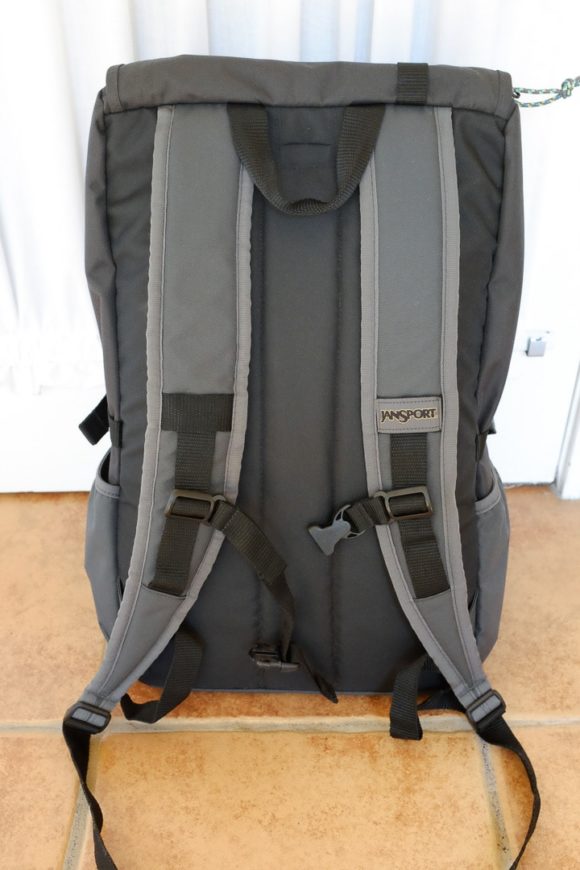
Jansport Hatchet Backpack in Grey Tar (Back)
Each side of the backpack has a large elasticized pouch for water bottles or other items, and above those are compression straps to cinch down the pack a bit. I keep my Panasonic TS2 camera in one of these pouches.
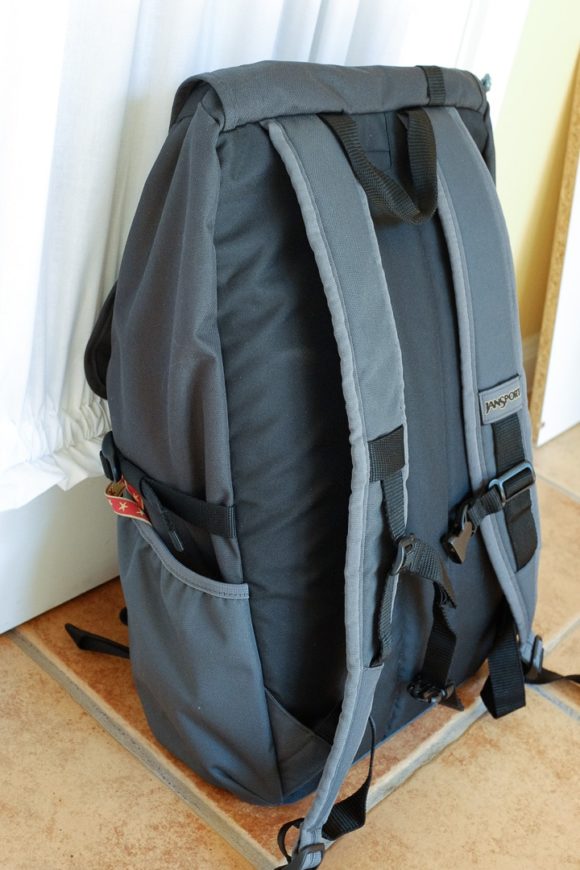
Jansport Hatchet Backpack in Grey Tar (Back side)
The left side also has a zippered pocket, which is nice, but it’s pretty tight if you have something in the water bottle pouch. It’s great to have the drink pockets on both sides, which something my other bags lack.
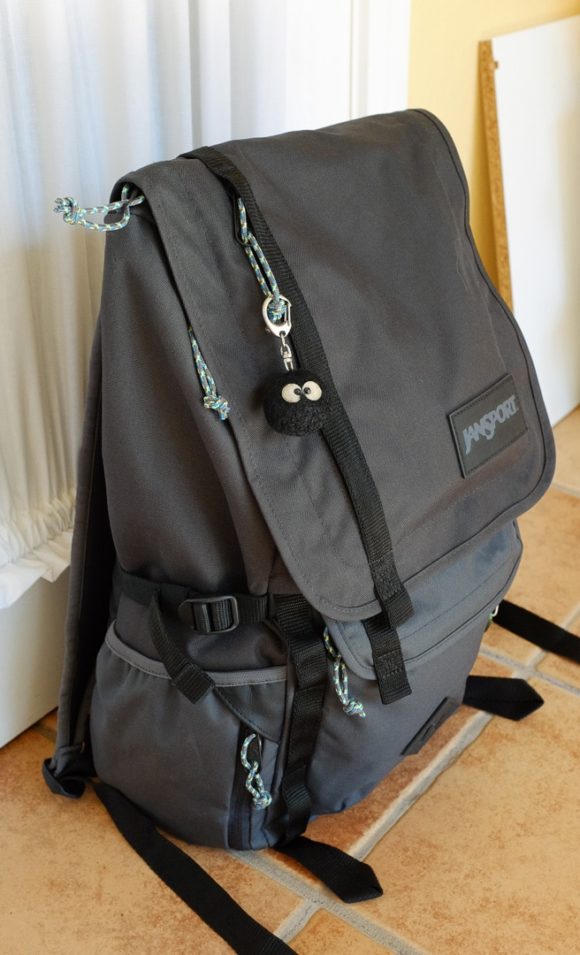
Jansport Hatchet Backpack in Grey Tar (Left side with zippered pocket)
The back has some daisy-chain style loops in the straps (where I have a green Camp USA Nano Carabiner), and also two loops at the bottom of the pack, for strapping on other items. I guess some people strap their yoga mats there. In the center, there is a small zippered pouch hidden under a flap. It’s not so big, but it doesn’t stick out too far. Inside this pouch, I keep my Totoro zippered container which holds stuff like aspirin, eye-drops, gum, and other semi-perishables.
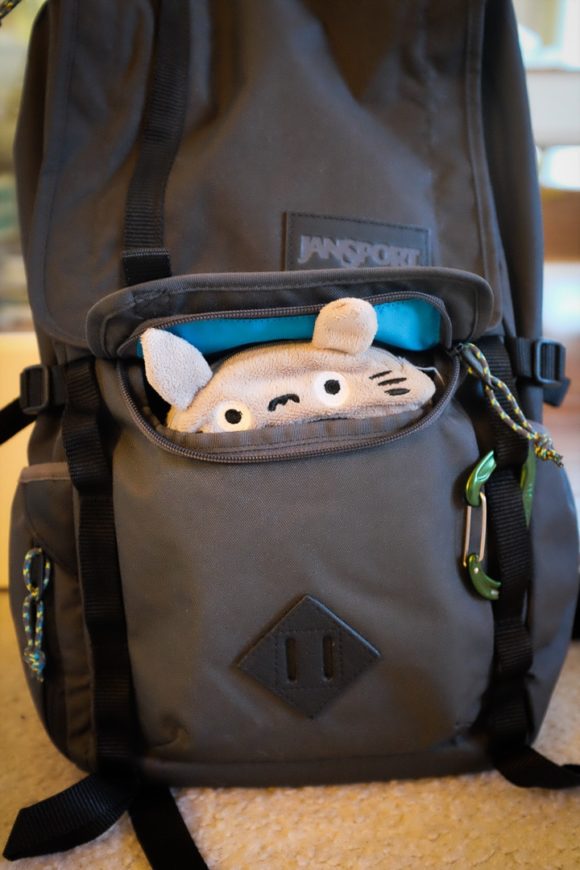
Jansport Hatchet Backpack in Grey Tar (Small Pocket)
Above that, on the main flap, is a vertical zipper which opens a pocket on the lid. You can see in the photos I have my makkuro-kurosuke from Totoro/Spirited Away. This pocket is really convenient to access. I keep my wallet and keys in there, but it’s a large pocket (the full size of the flap) so you could fit a lot in there.
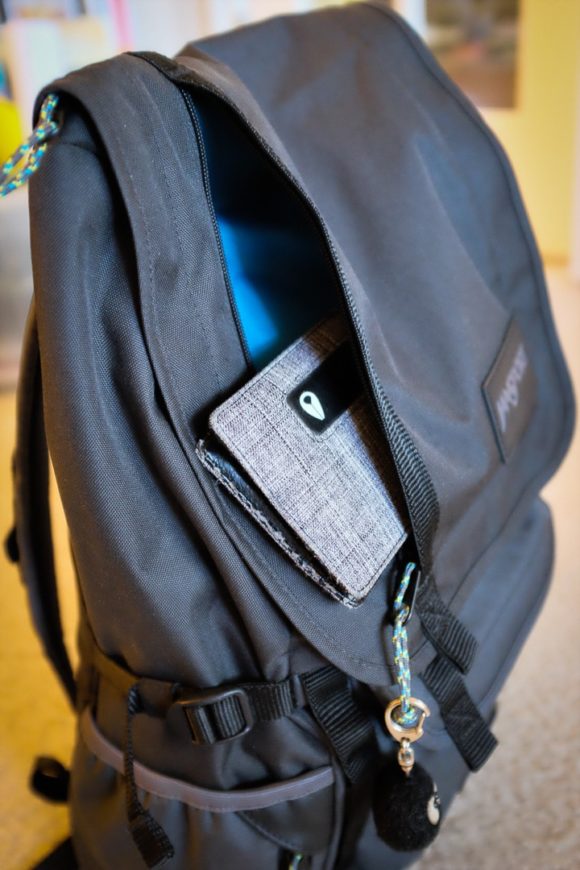
Jansport Hatchet Backpack in Grey Tar (Vertical Pocket)
One of the things that drew me to this backpack was the way the main compartment opened. When you zipper open the flap, you have easy access to the contents. On a conventional backpack, you are reaching into it from the top. With the JanSport Hatchet backpack, you have a larger opening to access your stuff.
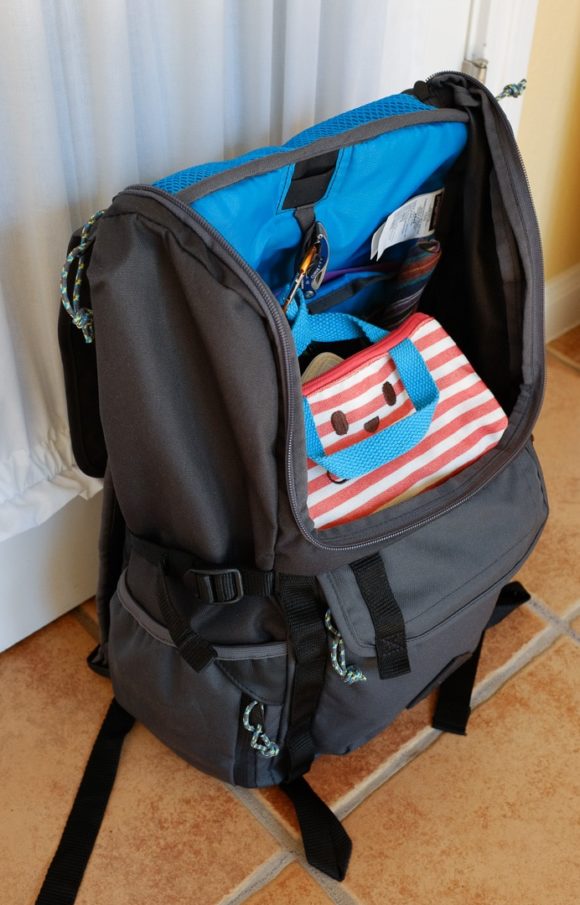
Jansport Hatchet Backpack in Grey Tar (Open)
This is pretty nice if you have a lot of things at the bottom of the pack. For myself, I put my padded camera-bag insert in the bottom, and in it I keep my Instax Printer, extra pack of film
, Instax photo album, my small camp towel, and my Fujifilm X100T camera
.
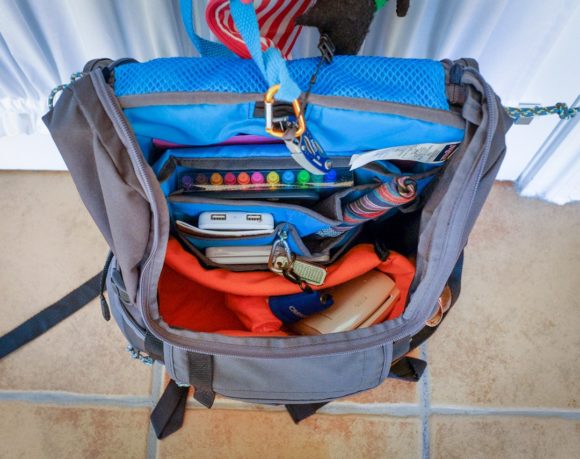
Jansport Hatchet Backpack in Grey Tar (Contents)
One thing to keep in mind is that if you have the main compartment filled with stuff, it might fall out when you unzip the pack since the opening comes down halfway. In that case, it might be better to put the pack down on its back and open it up laying flat. Another drawback of this flap design is that the zippers are a little harder to operate since the ends of the zipper tracks are not so taut. It just takes some getting used to, but even so, it isn’t the easiest bag to open.
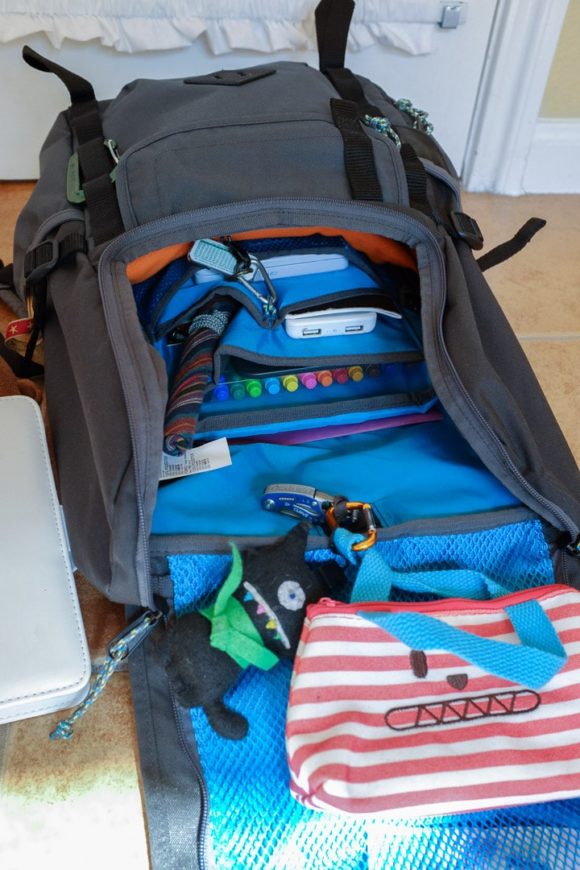
Jansport Hatchet Backpack in Grey Tar (Inside)
The rest of the main compartment consists of a lightly-padded space for a large laptop or hydration pack (I keep a clear file with papers in here), a smaller soft-lined sleeve for tablet-sized devices (I have my Kindle and Zebra McKee Colored Pens here), then two side-by-side pockets for smaller items, one of which is soft-lined. I keep my Anker battery, small notebook, Moo-cards in small Altoids tin, and a set of chopsticks. There is also a narrow mesh pocket which I’m not sure what you’d use for. Finally, there are two loops, one at the top of the pack, and one in the middle which has a carabiner attached. On the inside of the flap itself is a large, zippered mesh pocket. This is very nice since you can see what you have in this pocket without having to open it.

Jansport Hatchet Backpack in Grey Tar (Open Flap)
Overall, I’m disappointed in the interior organization. For instance, there are no dedicated spaces for pens, nor are there any zippered pockets inside. In comparison, the seemingly much-smaller Patagonia Minimass messenger bag has many more pockets, including zippered, velcroed, pen pockets, and mesh. It actually organizes all of the items nicely, while the JanSport Hatched has run out of pockets! So, what is going on here? Well, the JanSport designers should have taken full advantage of the height of the backpack and extended the top of the laptop sleeve farther up towards the top edge of the backpack (up to the hydration opening). There are at least four inches there that they could have used to put more organizational pockets. Instead, it’s just a lot of wasted surface area.
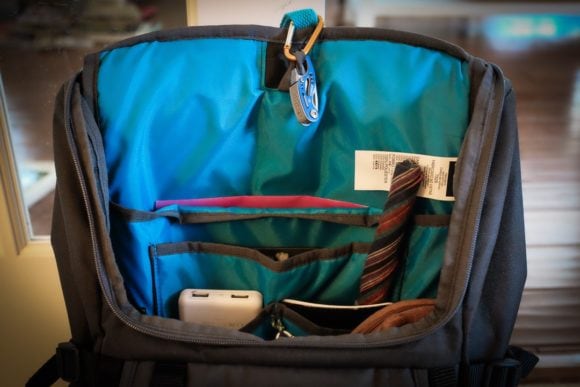
Jansport Hatchet Backpack in Grey Tar (Pockets)
Because of this lack of organization, I am using some extra bags and storage units. For pens, I have a red and white striped pencil bag that I found at Daiso. I hung it from the top loop (along with my ugly doll) and it hangs loosely in that wasted space. It actually hangs too low, so I am looking for a different solution that I can fill the space at the top of the backpack. For electronics-related items, I have a brown LINE character zippered pouch. It holds USB cables, USB wall plug, two camera batteries, LensPen, SD memory cards, and USB memory sticks. That just sits on top of my Instax Printer.
There may be other storage hacks I can apply to add more storage. For instance, if I can find the right kind of bag or pouch, I can fasten it to the mesh pocket so that it will sit high up in the interior space. It’s disappointing, though, that I have to look at adding more organization to this backpack. On my North Face Router pack, there are so many places to put things, I was wondering, “What should I use this pocket for? And this pocket?” But with the JanSport Hatchet, it was the opposite. I was wondering, “Where the heck am I going to put these cables? Where should I put the spare batteries?” etc. Even the Patagonia Minimass bag had more options. I guess I was expecting more from the backpack.
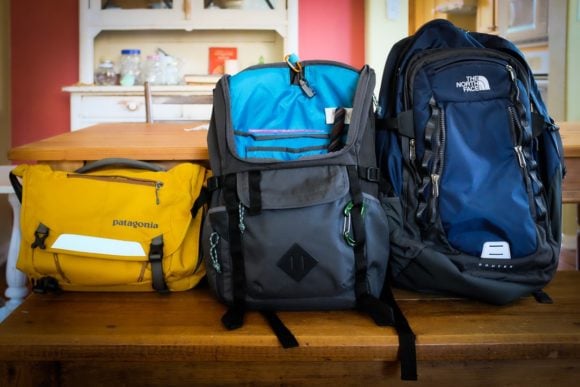
Patagonia Minimass, JanSport Hatchet, North Face Router
But, the advantage of the backpack is that it can expand a bit in that top area. I have no problem stuffing my jacket in there, which would be impossible with the Patagonia Minimass.
Also on the plus side, the JanSport Hatchet backpack was relatively inexpensive. I found it on sale for $40, and I had an REI dividend to use, so it only cost me $30 including shipping. That’s only a third of the cost of the Patagonia Minimass, and a quarter of the price of the North Face Router pack. So, I guess the phrase, “You get what you pay for,” definitely applies to bags and backpacks!
What’s kind of neat is that if you have the flap open, you can use the strap that is on the outside of the flap to loop around a hanger or something, and the backpack can hang on the wall totally open, like some kind of giant travel toiletries kit.
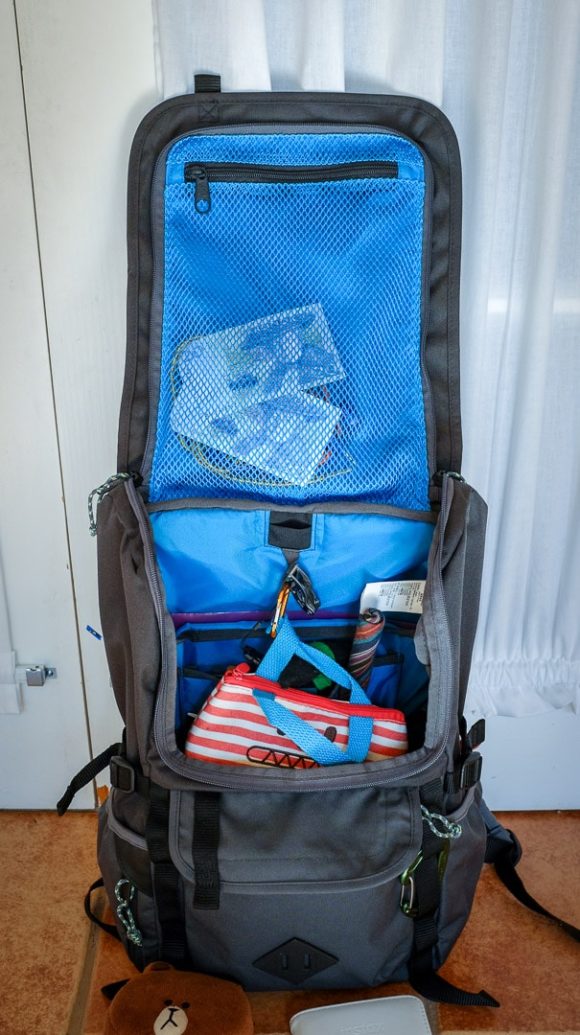
Jansport Hatchet Backpack in Grey Tar (Flap up)
Here’s a look at most of the stuff I keep in the JanSport Hatchet backpack. I just noticed… I have 5 “creatures” along for the ride!
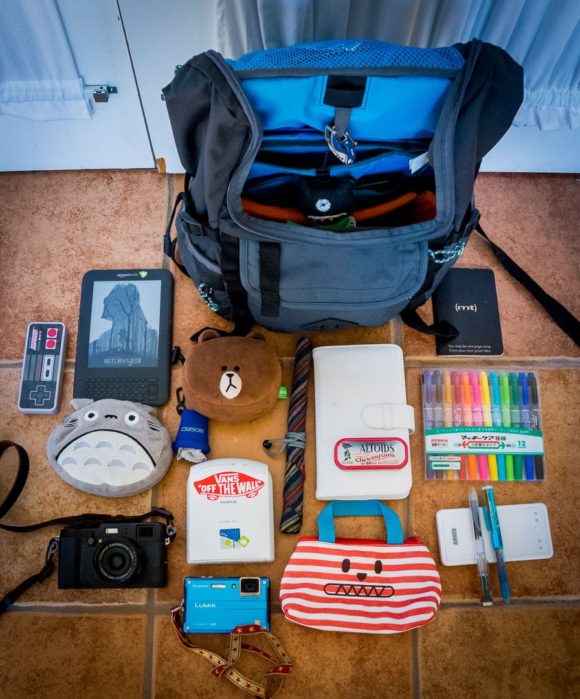
JanSport Hatchet Backpack (What’s In My Bag)
In conclusion, the JanSport Hatchet backpack is a comfortable, stylish, and functional backpack which has the potential to be great but falls short because of the poor interior organization. Still, for the price, it’s a pretty good backpack. Plus, JanSport backpacks have a lifetime guarantee, so if anything goes wrong or wears out, they will replace it for free! So, I’ll be using my new backpack regularly, while I look for ways to improve the interior situation. 3.5 out of 5 stars!

